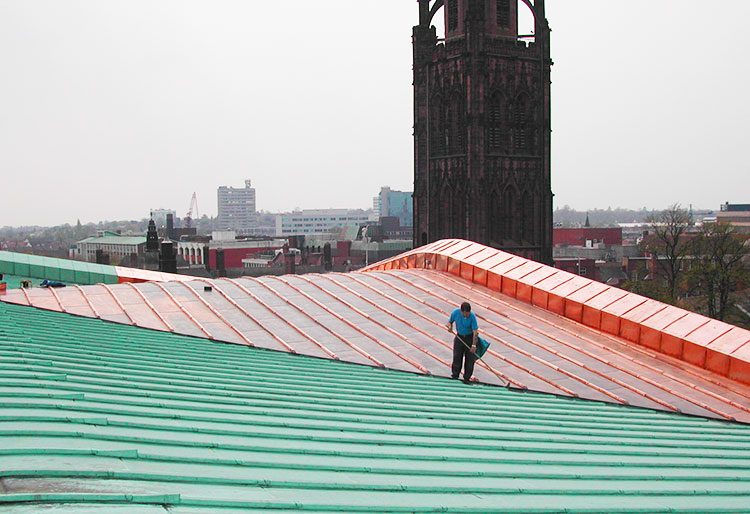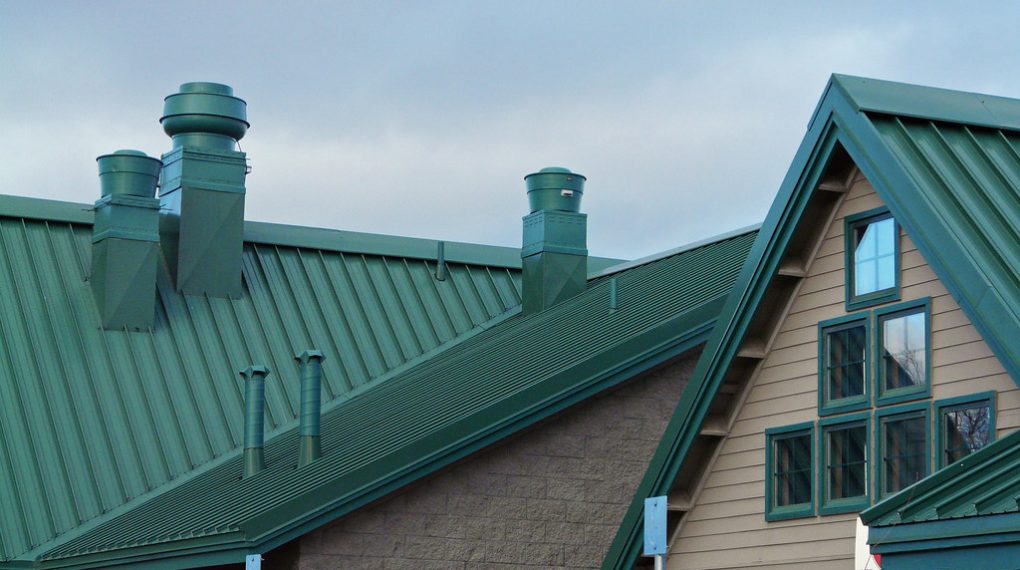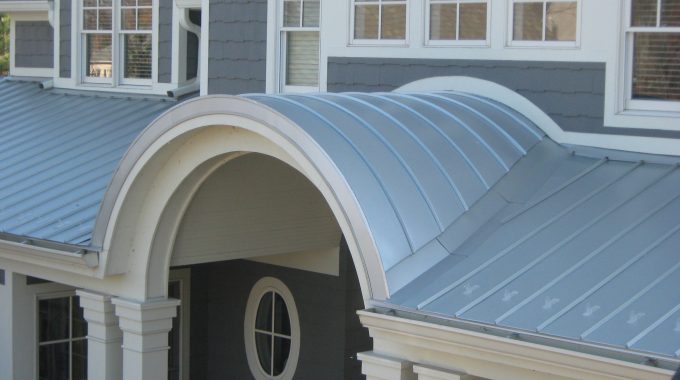There are many solutions for covering a roof. Amongst the most suitable materials, roofing sheets are both practical to install and very efficient. There are many different types of roofing, making it possible to choose a roof with an aesthetic that suits everyone and every building: zinc or steel roofs, glass, polycarbonate, PVC or even the old fibrocement roofs are now prohibited.
The zinc roof: characteristics and dimensions

Zinc roofing is a relatively recent material since it was necessary to find the appropriate treatment to avoid its oxidation before being used as a roofing material.
Today, mechanical constraints and climatic loads determine the width and thickness limits of rolled zinc used in roofing.
Length of the zinc panel
The maximum length of the panel is chosen according to the slope of the roof and the joining system used, which can be:
– a single span;
– a step system; or
– a staple system.
Width of the zinc panel
The width is defined according to the geographical area and the wind map:
– The 500 mm width is usable everywhere.
– The 650 mm width is to be banned in zone 4 of the wind map. This limitation allows avoiding flapping due to the wind and tearing while ensuring a better distribution of the fixing lugs.
– In the mountains and at the seaside, a width of 500 mm is frequently used.
The thickness of the zinc roof
Available thicknesses are:
– 0.65 mm;
– 0,70 mm;
– 0.80 mm.
In the mountains, a minimum thickness of 0.70 mm is necessary because of possible thermal shocks. At an altitude of more than 900 m, a cold roof with double ventilation is recommended.
Importance of zinc roof ventilation

Ventilation is also vital to limit possible condensation. Two types of installation are possible:
– the warm roofing which presents non-ventilated roofing under its support;
– cold roofing or ventilated roofing, with an air space circulating between the zinc support and the insulation.
If all these elements are respected, you will find more advantages than disadvantages in choosing a zinc roof.
Here is a summary table:
| Advantages of a zinc roof | Disadvantages of a zinc roof |
|
– Durability: zinc has a lifespan of over 50 years. – Resistance to corrosion. – Lightweight. |
– Subject to local architectural regulations. – Complicated installation. |
Incompatibility of zinc with certain metals
Zinc is incompatible with certain other metals and building materials. Therefore, it is necessary to check that your structure is suitable before opting for this type of roofing. The table below will help you:
|
|
Possible contact |
Contact to avoid |
|---|---|---|
|
Copper |
X |
|
|
Aluminium |
X |
|
|
Lead |
X |
|
|
Carbon steel |
|
X |
|
Stainless steel |
X |
|
|
Galvanized steel |
X |
|
|
Pine, poplar |
X |
|
|
Oak, chestnut |
|
X |
|
Gypsum |
|
X |
|
Lime |
|
X |
|
Cement |
|
X |
The installation of slatted zinc roofing
The installation of a zinc roof, also called “false silver”, is relatively complex and requires the intervention of a professional. The steps of this installation are the following:
– Insulation of the roof, often from the outside.
– Installation of rafter boxes on the purlins:
◦ these caissons are laid in the direction of the slope;
◦ they are lined with a counter batten: this enhancement is necessary for air circulation.
– sheathing fixed on the risers:
◦ the boards are at least 10 cm wide by 18 cm thick minimum;
◦ do not forget to create a free joint of 5 mm between each row.
– Placement of cleats:
◦ these cleats are installed in the direction of the slope;
◦ they are trapezoidal;
◦ the spacing between cleats depends on the width of the trays.
– Placement of cleat legs:
◦ they are slid under the cleats at the rate of a spacing every 50 cm;
◦ the first tab must be located within 10 cm of the gutter, the last within 10 cm of the ridge.
– Installation of the gutter connection flap.
– Installation of the zinc trays from bottom to top:
◦ the trays are placed between each cleat and fixed with the previously installed lugs;
◦ the tabs are folded over to pinch the edge of the tray.
– Placement of the joint covers, which are placed:
◦ overlapping on the cleats;
◦ always from bottom to top.
– Installation of the ridge seal by placing:
◦ of joint covers folded in place;
◦ or special joint covers already pre-folded.
Please note: waterproofing and ventilation must be impeccable. BRUNSWICK ROOFING SUPPLIES can give you an estimate for the installation of a zinc roof.
Photovoltaics is finally possible on a zinc roof.
There are now panels made of voltaic panels surrounded by titanium zinc: these panels are installed in a standing seam roof layout, with each panel having its connection.
There is also solar zinc roofing: titanium zinc panels with capillary tubes connected to a heat pump.
Did you like this post? Remember to comment and share!

